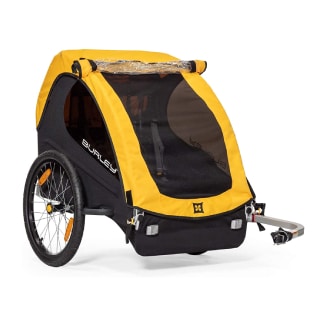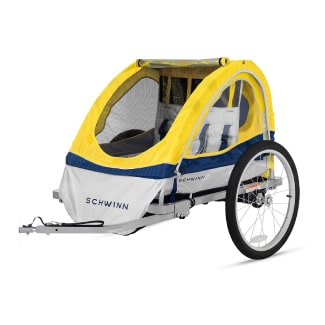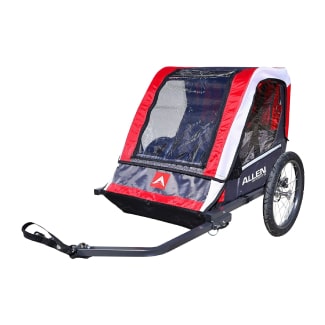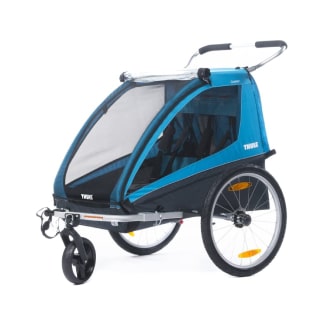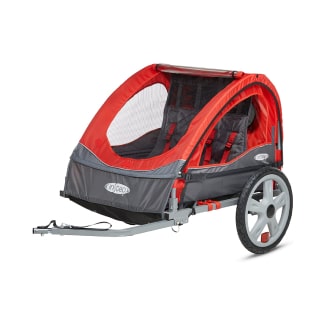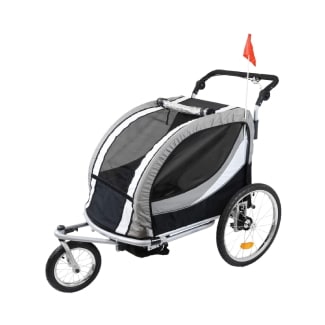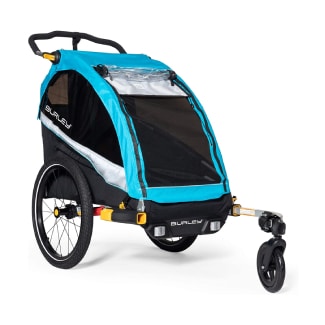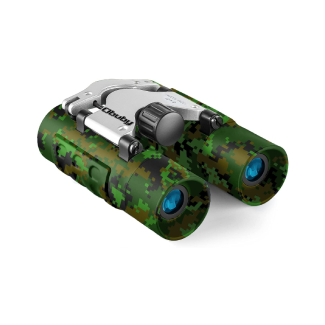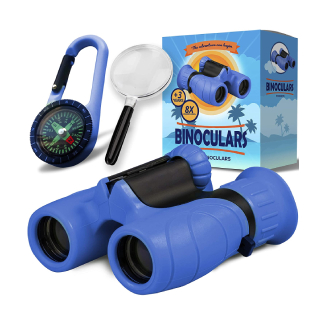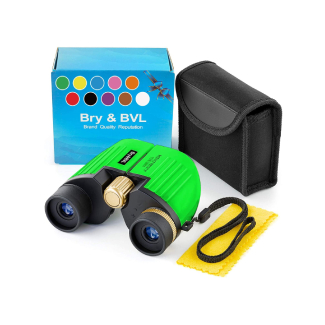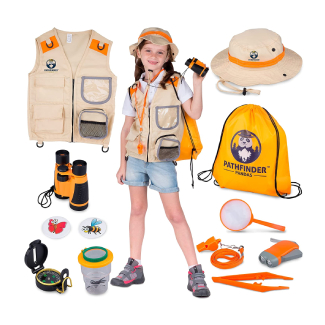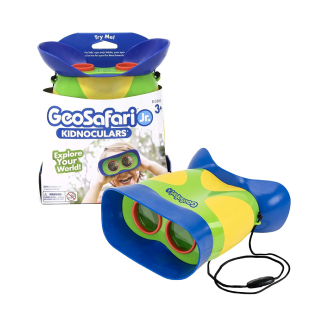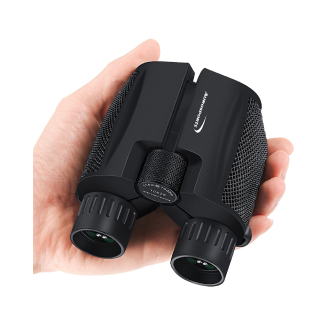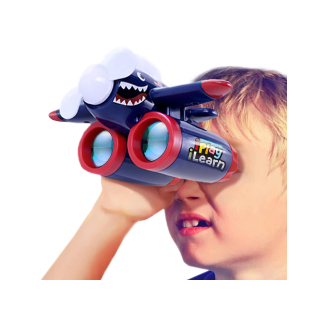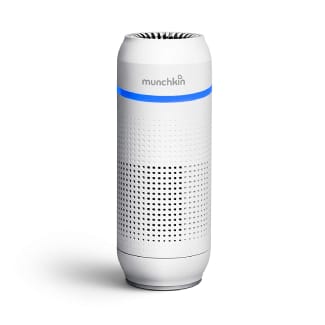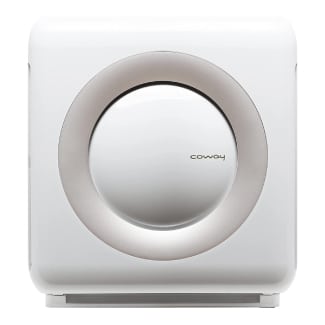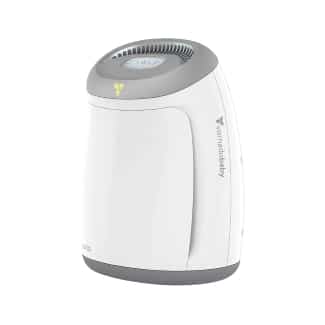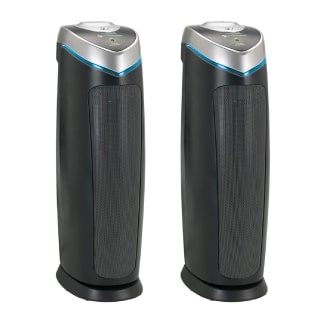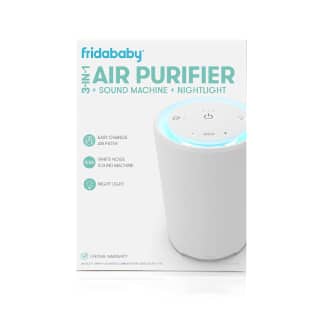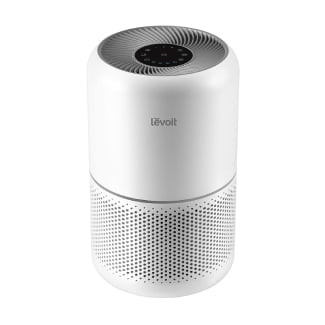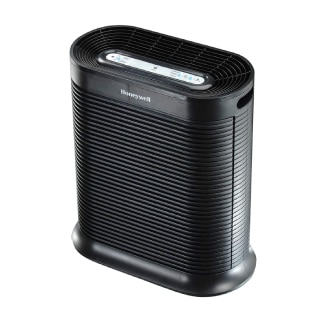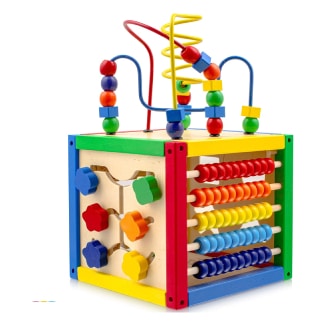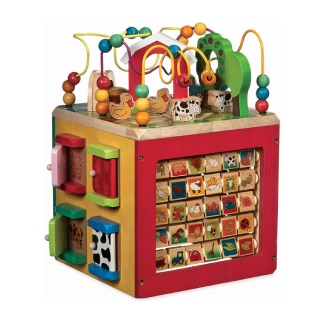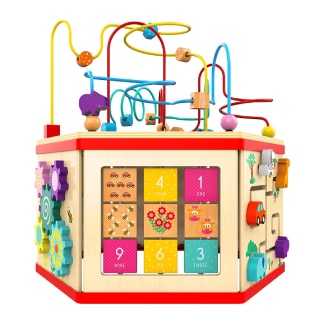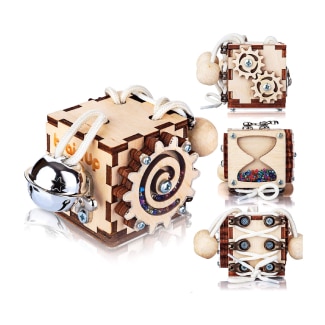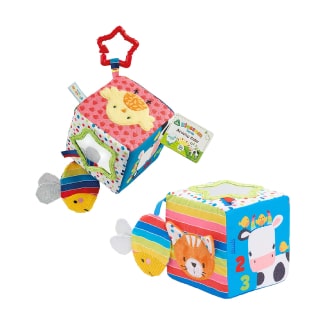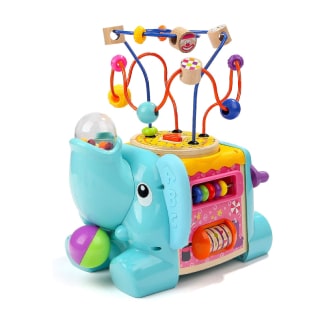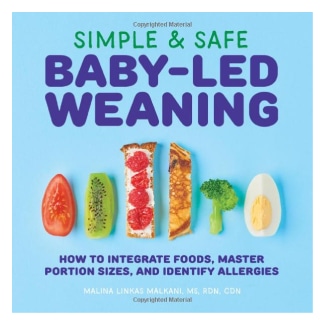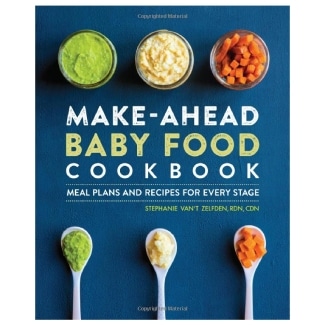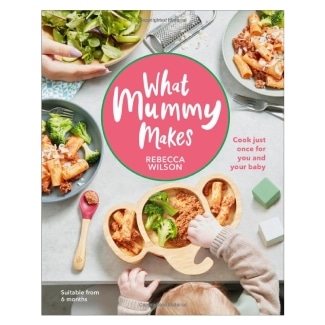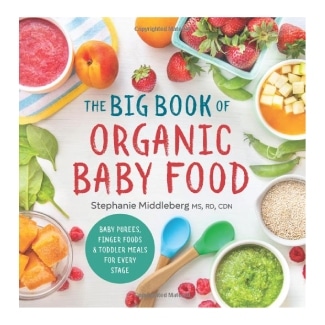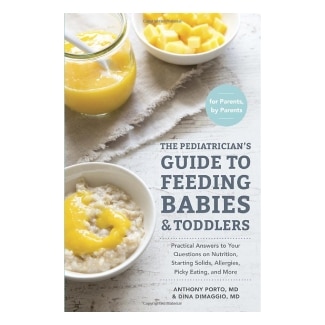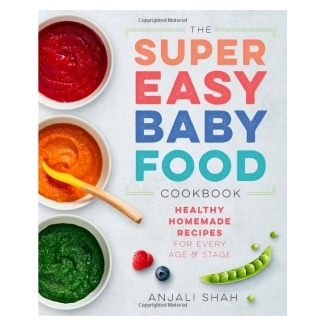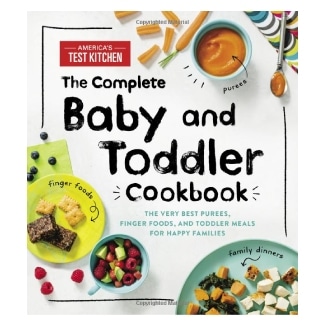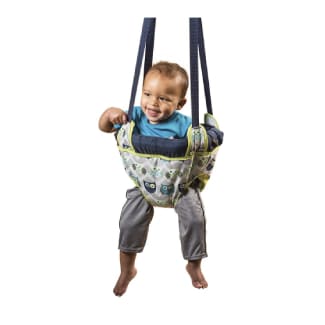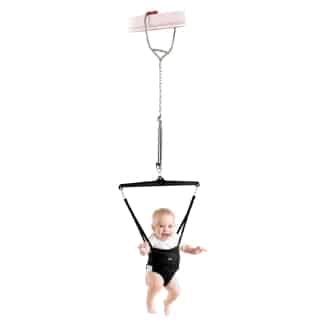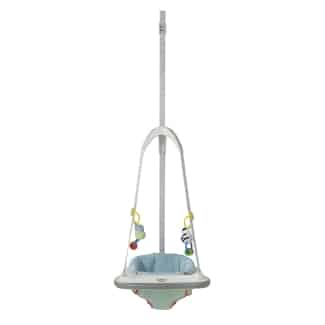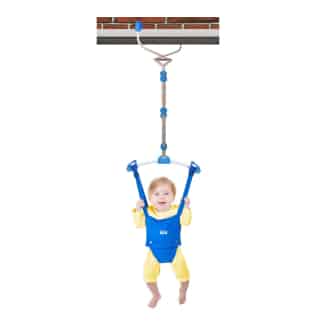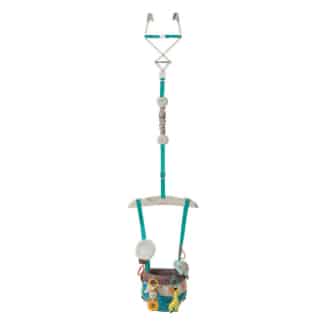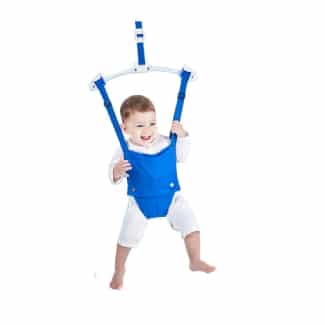Experiencing the world through the eyes of your baby is one of the greatest joys of having children. One such outing is taking your little one swimming for the first time. Whether it’s a pool, a lake, or simply a neighborhood splash pad, water play is sure to be a hit with almost everyone. However, it can be nerve-wrecking preparing your baby for new activities and experiences. Unfortunately, water play and the super absorbent diapers your baby wears don’t exactly mix. Not only is it uncomfortable for your child to maneuver and play with a very full diaper, it’s not sanitary for anyone to wear a regular diaper in water areas. Luckily, there are a multitude of reusable and disposable swim diaper options available to ensure water play is safe, comfortable and sanitary for your little one and everyone around. Made from durable and functional materials, swim diapers allow your baby to indulge in water play without the worry of accidents happening. With adjustable snaps or velcro and varying sizes available, you can be sure to find the perfect baby swim diaper option for all the little ones in your family.
[ez-toc]
7 Best Baby Swim Diapers (2021 Reviews)
1. Budding Sprout Baby Swim Diapers Set of 2
(Best set of two diapers — $)
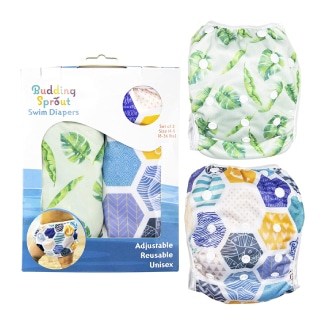 Why it’s great: The mesh inner layer of the Budding Sprout Baby Swim Diaper prevents waste from leaking out of the diaper, and the waterproof exterior prevents water from getting in. The adjustable side snaps guarantee a tight fit and reduce excess fabric. The set of two swim diapers is perfect for avid swimmers to always have a spare and dry reusable diaper available.
Why it’s great: The mesh inner layer of the Budding Sprout Baby Swim Diaper prevents waste from leaking out of the diaper, and the waterproof exterior prevents water from getting in. The adjustable side snaps guarantee a tight fit and reduce excess fabric. The set of two swim diapers is perfect for avid swimmers to always have a spare and dry reusable diaper available.
Keep in mind: The diaper runs on the small side, so order up if in between sizes.
Good for: Babies who swim often and need a clean reusable diaper daily.
2. ALVABABY Swim Diaper
(Best fully adjustable diapers — $ )
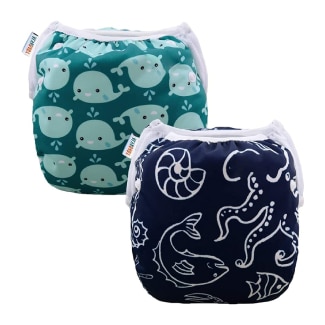 Why it’s great: Designed with polyester elastics in both the waist and legs holes along with soft lycra bindings, these baby swim diapers ensure a snug, comfortable fit for little ones. The 3×3 snaps further allow you to customize the size of the diaper and offer long term use as the diaper can grow with your child.
Why it’s great: Designed with polyester elastics in both the waist and legs holes along with soft lycra bindings, these baby swim diapers ensure a snug, comfortable fit for little ones. The 3×3 snaps further allow you to customize the size of the diaper and offer long term use as the diaper can grow with your child.
Keep in mind: Given the ability to customize size, the number of snaps can be difficult to close on a wiggly baby.
Good for: Parents looking to invest in a customizable baby swim diaper that grows with their child.
3. Will & Fox Reusable Swim Diaper and Wet Bag Set
(Best travel option — $$)
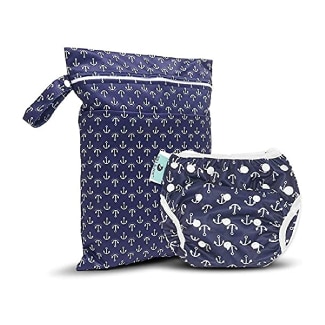 Why it’s great: Made from premium waterproof polyester along with soft, stretchy silk, and a deluxe mesh lining, the Will & Fox Reusable Swim Diaper is both functional and comfortable. Paired with a wet bag to keep clothes dry when carrying a wet swimsuit, no detail is left unnoticed in this quality design.
Why it’s great: Made from premium waterproof polyester along with soft, stretchy silk, and a deluxe mesh lining, the Will & Fox Reusable Swim Diaper is both functional and comfortable. Paired with a wet bag to keep clothes dry when carrying a wet swimsuit, no detail is left unnoticed in this quality design.
Keep in mind: The leg holes are designed to seal waste in, and can be tight-fitting on children with larger thighs. Be sure to size up if in between sizes.
Good for: Families traveling back and forth with a wet swim diaper.
4. Babygoal Baby Reusable Swim Diaper
(Best budget option — $)
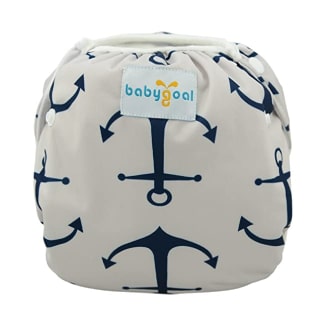 Why it’s great: With numerous charming patterns and low cost, the Babygoal Baby Reusable Swim Diaper is an excellent item to stock up on. Made from polyester with waterproof and breathable TP, these diapers are completely free of dioxins, sodium polyacrylate, BPA, phthalate, latex and lead.
Why it’s great: With numerous charming patterns and low cost, the Babygoal Baby Reusable Swim Diaper is an excellent item to stock up on. Made from polyester with waterproof and breathable TP, these diapers are completely free of dioxins, sodium polyacrylate, BPA, phthalate, latex and lead.
Keep in mind: Over time, the chlorine can cause discoloration and fading to the print if not rinsed with clean water after use.
Good for: Parents looking for a quality baby swim diaper while on a budget.
5. Huggies Little Swimmers Swim Diapers Disposable Swim Pants
(Best disposable option — $$)
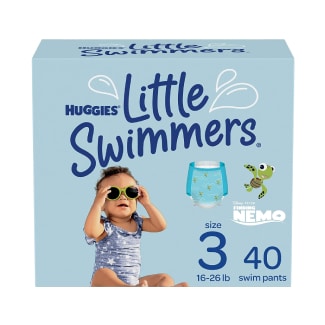 Why it’s great: Designed with a unique absorbent material that doesn’t swell in water, these diapers are ideal for little swimmers. The easy open, reclosable sides and ability to toss in the trash after each use make them extra convenient for busy parents.
Why it’s great: Designed with a unique absorbent material that doesn’t swell in water, these diapers are ideal for little swimmers. The easy open, reclosable sides and ability to toss in the trash after each use make them extra convenient for busy parents.
Keep in mind: Be sure to only use these diapers for swimming, as they can leak liquid if used in a car seat or stroller.
Good for: Parents short on time looking for a convenient disposable option.
6. i play by Green Sprouts Baby Reusable Swim Diaper
(Highest quality — $$)
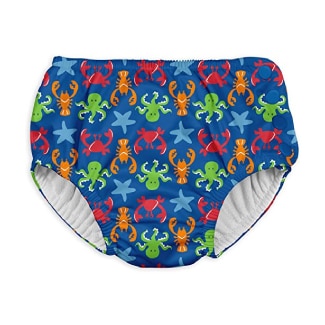 Why it’s great: The i play by Green Sprouts Baby Reusable Swim Diaper has a patented three-layer design that not only protects against any messes from leaking outside of the diaper, but also prevents diaper rash. Completely machine washable, these high quality diapers don’t require any other diaper to be worn underneath.
Why it’s great: The i play by Green Sprouts Baby Reusable Swim Diaper has a patented three-layer design that not only protects against any messes from leaking outside of the diaper, but also prevents diaper rash. Completely machine washable, these high quality diapers don’t require any other diaper to be worn underneath.
Keep in mind: The streamline construction of this diaper is not adjustable, so be sure to use the sizing guide to find the perfect fit.
Good for: Parents looking for a long-lasting and comfortable diaper for their babies.
7. Nageuret Reusable Swim Diaper
(Best eco-friendly option — $$)
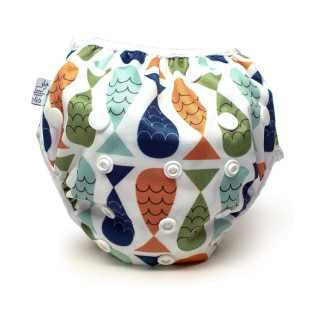 Why it’s great: Reduce your carbon footprint by investing in this eco-friendly diaper that can be used for multiple years given its ability to fit babies from diaper size N all the way to diaper size 5 with CPSIA-tested adjustable snaps. This small, family owned business emphasizes high-end and earth-friendly products and donates 5% of yearly sales to Compassion International.
Why it’s great: Reduce your carbon footprint by investing in this eco-friendly diaper that can be used for multiple years given its ability to fit babies from diaper size N all the way to diaper size 5 with CPSIA-tested adjustable snaps. This small, family owned business emphasizes high-end and earth-friendly products and donates 5% of yearly sales to Compassion International.
Keep in mind: These swim diapers are thinner than some other designs, but are equally, if not more, effective at keeping in waste and holding out water.
Good for: Earth-conscious families.
FAQs about Baby Swim Diapers
1. What should I look for in a baby swim diaper?
When purchasing a baby swim diaper, it’s essential to find a properly fitting diaper to ensure it’s sanitary for all water play. Many diapers offer adjustable snaps so the diaper can grow with your child according to his or her current diaper size as well as overall body weight. A swim diaper will fit more snugly than a regular diaper. Make sure the diaper doesn’t retain water, which can be uncomfortable for an infant. Lastly, a fun print that caters to your children’s interests may help encourage them to engage in water play!
2. Why should I use a baby swim diaper rather than a regular diaper?
A regular diaper is designed to retain both liquid and solids. However, a swim diaper is made to only hold in solid waste, which is necessary for hygienic purposes. Otherwise, the water from a pool or lake would fill the diaper immediately and make it more likely to fall off the infant.
3. How do I know what size baby swim diaper to get?
Look at your child’s current diaper size to get a baseline for what size diaper to get. If in between sizes, opt to size down to ensure a snug fit to prevent any leaks. Many baby swim diapers are built with strategically placed snaps that allow you to size the diaper accordingly and enlarge it as your baby grows. You can also check the specific brand you’re purchasing for a guide according to your child’s height and weight.
4. How do I care for baby swim diapers?
Most baby swim diapers are machine washable or disposable. For reusable, simply toss any loose waste into a trash can and wash the diaper in cold or warm water. You can air dry or tumble dry on low heat. It’s pertinent to rinse and wring the diaper out if in chlorinated water to lengthen the life of the diaper as chlorine can weaken and detroit fabric overtime. Be sure to check the tag of your specific diaper for further clarification on cleaning recommendations. For disposable, toss in the trash after each use.
5. How do I prepare my little one for water play?
Water play can be an exciting, albeit nerve-wracking, time for your little one. Start small, such as engaging with different types of toys in the bath or using a water sensory table where your child is not submerged in water. Allow your children to pick out their own baby swim diapers or choose a design they will like to build up their self-esteem before entering the water. The important guidance is to go slow and follow your child’s lead. Your little ones are more likely to engage and enjoy water play when able to go at their own pace.
Conclusion
Introducing your little one to water play is an exciting experience for both baby and parents. However, it doesn’t come without its stresses preparing your little one for a new activity. Be sure to be extra patient when first introducing your infant to the water, and prep them ahead of time for what they will wear when getting ready to go into a pool, lake, or splash pad. Reusable diapers are a comfortable and green option that allow your child to move freely in water without the worry of accidents. With fun and spunky patterns, you can be sure to choose a baby swim diaper option that your child will love. By preparing your baby ahead of time with what water play will look like and allowing them to choose what swim diaper to wear, you’re sure to have a successful experience for the entire family.

